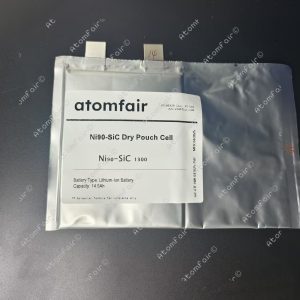Your cart is currently empty!

Atomfair 4-Methyl-1,3,2-dioxathiolane 2,2-Dioxide propylene sulfate C3H6O4S
Description 4-Methyl-1,3,2-dioxathiolane 2,2-Dioxide (CAS No. 5689-83-8) is a high-purity cyclic sulfate ester with the molecular formula C3H6O4S . This specialized organic compound is widely utilized in synthetic chemistry, particularly as a versatile alkylating or sulfonating agent. Its cyclic structure and reactive sulfate group make it valuable for constructing complex molecular architectures in pharmaceutical and materials science research. Available in rigorously controlled purity grades, this product is ideal for demanding applications where consistency and performance are critical. Proper handling under inert conditions is recommended due to its reactivity.
Description
Description
4-Methyl-1,3,2-dioxathiolane 2,2-Dioxide (CAS No. 5689-83-8) is a high-purity cyclic sulfate ester with the molecular formula C3H6O4S. This specialized organic compound is widely utilized in synthetic chemistry, particularly as a versatile alkylating or sulfonating agent. Its cyclic structure and reactive sulfate group make it valuable for constructing complex molecular architectures in pharmaceutical and materials science research. Available in rigorously controlled purity grades, this product is ideal for demanding applications where consistency and performance are critical. Proper handling under inert conditions is recommended due to its reactivity.
- CAS No: 5689-83-8
- Molecular Formula: C3H6O4S
- Molecular Weight: 138.14
- Exact Mass: 137.99867984
- Monoisotopic Mass: 137.99867984
- IUPAC Name: 4-methyl-1,3,2-dioxathiolane 2,2-dioxide
- SMILES: CC1COS(=O)(=O)O1
- Synonyms: 4-methyl-1,3,2-dioxathiolane 2,2-dioxide, 806-954-1, 5689-83-8, 1,2-Propanediol-cyclic sulfate, propylene sulfate
Application
4-Methyl-1,3,2-dioxathiolane 2,2-dioxide serves as a key reagent in organic synthesis, particularly for introducing sulfate groups in nucleophilic substitution reactions. It finds application in the preparation of specialty chemicals and pharmaceutical intermediates where controlled sulfonation is required. Researchers also employ this compound in polymer chemistry to modify material properties through ring-opening reactions.
If you are interested or have any questions, please contact us at support@atomfair.com
Related products
-
Atomfair 1 kg/roll Battery Grade Aluminum Foil (200mm W x 12um T) for Battery Electrode Substrate/ Current Collector
$169.95 -
Atomfair 1 kg/roll Battery Grade PET Composite Copper Foil for Battery Anode Substrate/ Current Collector
$529.95 -
Atomfair 1 kg/roll Double Sides Conductive Carbon Coated Aluminum Foil for Battery Electrode Substrate/ Current Collector (200 mm wide 14+1+1 um thick)
$189.95 -
Atomfair 14.5 AH Ni90 || SiC Dry Pouch Battery Cell Without Electrolyte Filling
$550.00 -
Atomfair 1AH LCO || Graphite Dry Pouch Cell Lithium Ion Battery
$169.95




